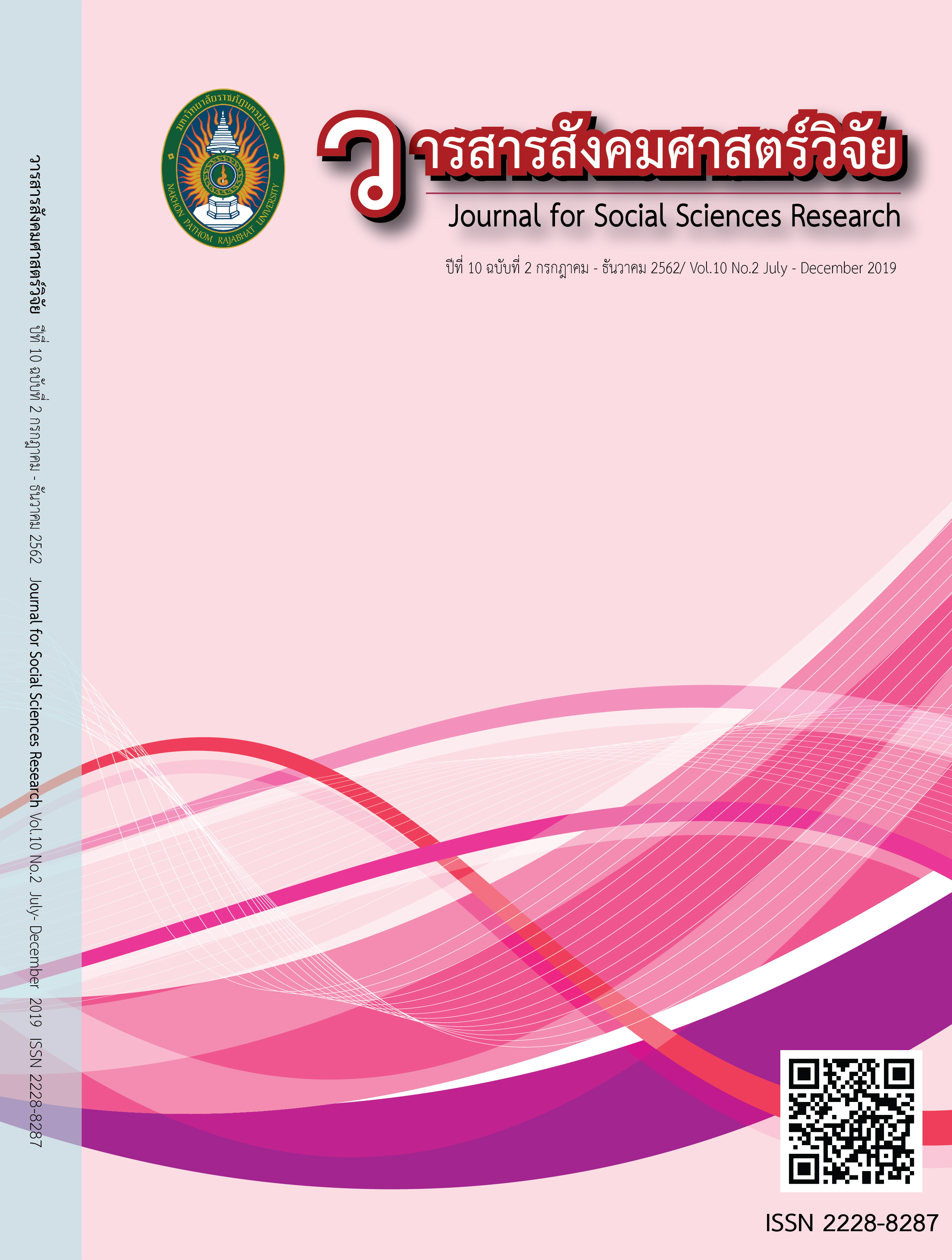ADMINISTRATOR’S COMPETENCIES AFFECTING EFFECTIVENESS OF SCHOOLS UNDER THE NAKHON PATHOM SECONDARY EDUCATION SERVICE AREA OFFICE 9
Main Article Content
Abstract
The purposes of this research were to study: 1) the school administrator’s competencies, 2) the effectiveness of school, and 3) the administrator’s competencies affecting the effectiveness of schools under the Nakhon Pathom Secondary Education Service Area Office 9. The sample was 313 school administrators and teachers who worked in the schools under the Nakhon Pathom Secondary Educational Service Area Office 9, derived by stratified random sampling. The instrument used for data collection was a 5 rating-scale questionnaire with the content validity between 0.67 and 1.00 and reliability coefficient of .98. The statistics used for data analysis were percentages, means, standard deviation, Pearson’s correlation coefficient, and multiple regression analysis.
The findings of the research were as follows:
1. Overall and in specific aspect, the competencies of school administrators under the Office of Nakhon Pathom Secondary Education Service Area 9 was at a high level. The aspects, ranking from the highest to the lowest average, were personnel development, analytic and synthetic thinking, vision, communication and motivation, teamwork, achievement orientation, self-development and good service.
2. Overall and specific aspect, the effectiveness of schools under the Office of Nakhon Pathom Secondary Education Service Area 9, was at a high. The aspects, ranking from the highest to the lowest average, were work satisfaction, life intention, learning achievement, and adaptability.
3. The school administrators’ competencies affecting the effectiveness of schools under the Office of Nakhon Pathom Secondary Education Service Area 9 with statistical significance at .01. The variance of organizational effectiveness could be explained at the percentage of 53.20. The factors that could predict the effectiveness of schools were vision, self-development, good service, personnel development, analytical thinking, and achievement orientation. The equation was Ytot = 1.919 + 0.128(X8) + 0.359(X3) – 0.186(X2) + 0.299(X7) – 0.167(X5) + 0.121(X1).
Article Details
บทความที่ได้รับการตีพิมพ์เป็นลิขสิทธิ์ของมหาวิทยาลัยราชภัฏนครปฐม
เนื้อหาของแต่ละบทความเป็นทัศนะของผู้เขียน ซึ่งที่ปรึกษา บรรณาธิการ กองบรรณาธิการ และคณะกรรมการบริหารวารสารไม่จำเป็นต้องเห็นด้วย หรือร่วมรับผิดชอบใดๆ


